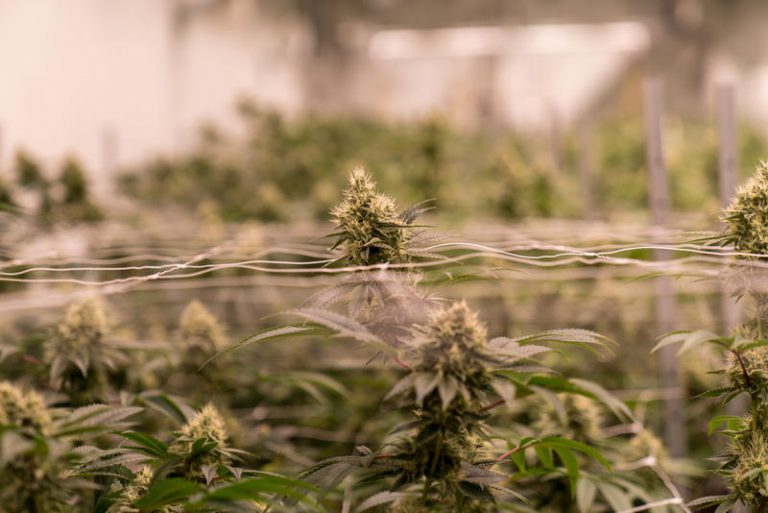BELLEVILLE — Supplies of recreational marijuana in Illinois will likely be tight when the drug is fully legalized on Jan 1. A group of state lawmakers wrote a joint letter this month expressing their concerns.
“Each state that has implemented an adult-use cannabis program has had issues related to supply shortages,” wrote the group, including state Sens. Heather Steans, D-Chicago, and Laura Fine, D-Glenview, and state Reps. Kelly Cassidy, D-Chicago; Bob Morgan, D-Highwood; Jehan Gordon-Booth, D-Peoria; Celina Villanueva, D-Chicago, and David Welter, R-Morris.
“We have confidence that they will take these matters as seriously as we do,” the lawmakers wrote.
[perfectpullquote align=”left” bordertop=”false” cite=”” link=”” color=”” class=”” size=””]“The larger question is, ‘Are there enough dispensaries, and is there enough access to this product’?”[/perfectpullquote]
Patients prioritized, valued
State law requires dispensaries that serve both medical and recreational customers to prioritize those with medical cards. Medical dispensaries must keep the same variety and quantity of cannabis as they did on July 1, 2019.
And dispensaries should want to keep medical cannabis flowing for patients, even if that means sacrificing recreational supplies, said Adam Orens, founder of the Marijuana Policy Group in Colorado. MPG is a group of cannabis economists that formed in 2014, offering data-driven assessments of the emerging cannabis industry.
“Those are very good customers from a provider’s perspective. They are generally heavier users,” he said.
New market challenges
When it comes to new recreational marijuana markets, long lines and shortages are to be expected, Orens said.
“The consumer may get [into the dispensary] after waiting in line and wish there was more selection,” he said. “That’s possible. It’s happened in every market.”
The companies tasked with supplying the new market foresee challenges to filling the initial demand.
“I think we’re going to be challenged on meeting demand for a little while,” said Chris Stone, senior policy advisor for Ascend Illinois, a cannabis company that owns dispensaries and cultivation centers in the state.
Stone predicts demand for recreational cannabis could be five or 10 times higher than current demand from medical use customers in Illinois.
“It’s hard to say, because we truly don’t know what the demand is going to be,” he said. “Expect some long lines, definitely a little bit of chaos.”
[perfectpullquote align=”left” bordertop=”false” cite=”” link=”” color=”” class=”” size=””]“Each state that has implemented an adult-use cannabis program has had issues related to supply shortages.”[/perfectpullquote]Orens cautions against overreacting to an initial shortage. A supply bottleneck is not the biggest issue for a new cannabis market, he said, pointing to Oregon as an example. “Each state that has implemented an adult-use cannabis program has had issues related to supply shortages,”
When that state legalized its recreational market, it issued far too many growing licenses and wound up with a massive oversupply of cannabis, he said.
“It’s harder to deal with that problem than it is to deal with a shortage because you can always allow more licenses and more cultivation space,” Orens said, adding that it’s much more difficult to take growing licenses away.
Accessibility to the product is more important to an emerging cannabis marketplace as supply issues will likely be temporary, Orens said.
“The larger question is, ‘Are there enough dispensaries, and is there enough access to this product?’ If there is not, people will stay with their pre-existing illicit relationships of how they obtain cannabis products now,” he said.
Price and availability define a cannabis program’s success, much like attracting consumers to any other kind of product, Orens said. The difference is that in this case, the state is trying to disrupt an existing illegal industry.
“Governments should be mindful that they’re not opening up a new market or industry,” he said. “They are trying to attract and incentivize participants in an illicit market to shop in a regulated market.”
Difficult predictions
It’s challenging to predict how much supply any state that legalizes recreational marijuana will need, Orens said. States that already have legal cannabis can be good models, but not in every case.
“There’s a lot of variation in cannabis demand across states, both on a percentage and an absolute basis,” Orens said. “Colorado is a heavily consuming cannabis state, and it always has been. Illinois is less so.”

In Colorado, 20% of people older than 18 report using marijuana each month, according to 2018 data from the National Survey on Drug Use and Health. That figure is 11% in Illinois.
“A lot of people talk about how there’s going to be more casual use, and there will be. But that doesn’t really have as much impact on production as those heavier users, because they’re purchasing larger amounts,” Orens said.
Current users likely won’t buy from dispensaries until state-regulated recreational cannabis is easier to get or less expensive than black market rates, he said. And those customers who use heavily are the most important for a new regulated industry.
“They’re consuming multiple days a week, and they’re consuming more each sitting because they have higher tolerances,” Orens said. “The ability of the industry to cater to those individuals, which generally have the most ingrained and long-standing illicit market relationships, is all about access and price.”
And transitioning those customers to a regulated market takes time, often years, he added.
Eric Schmid covers the Metro East for St. Louis Public Radio as part of the journalism grant program Report for America, an initiative of The GroundTruth Project. Follow Eric on Twitter: @EricDSchmid

